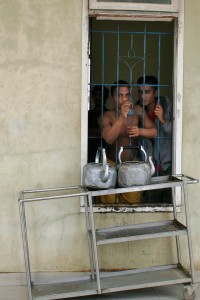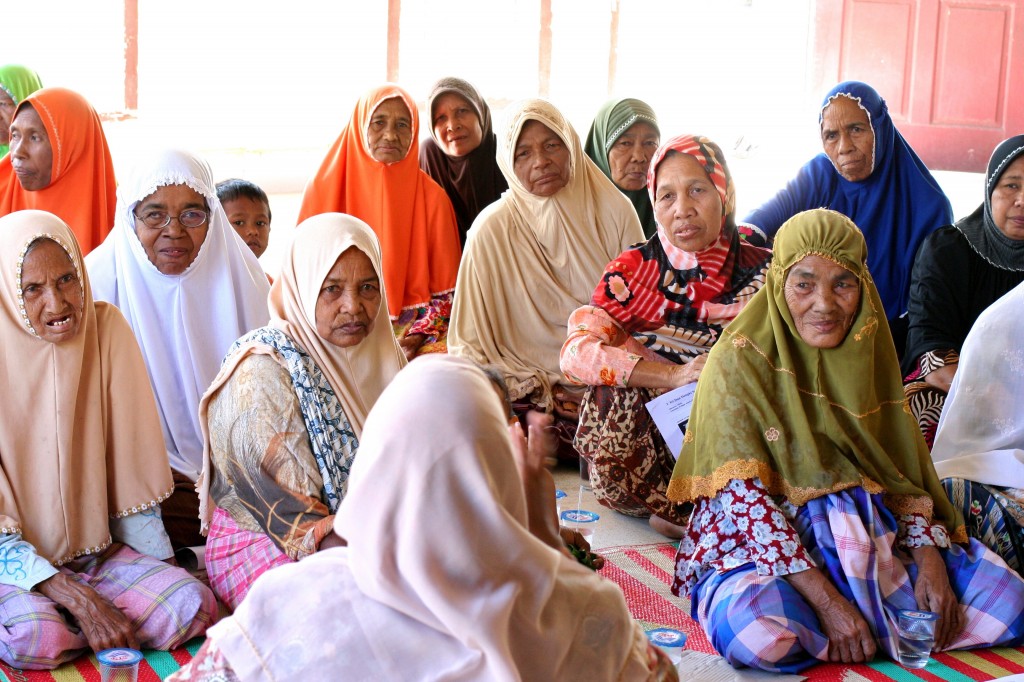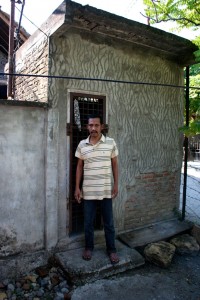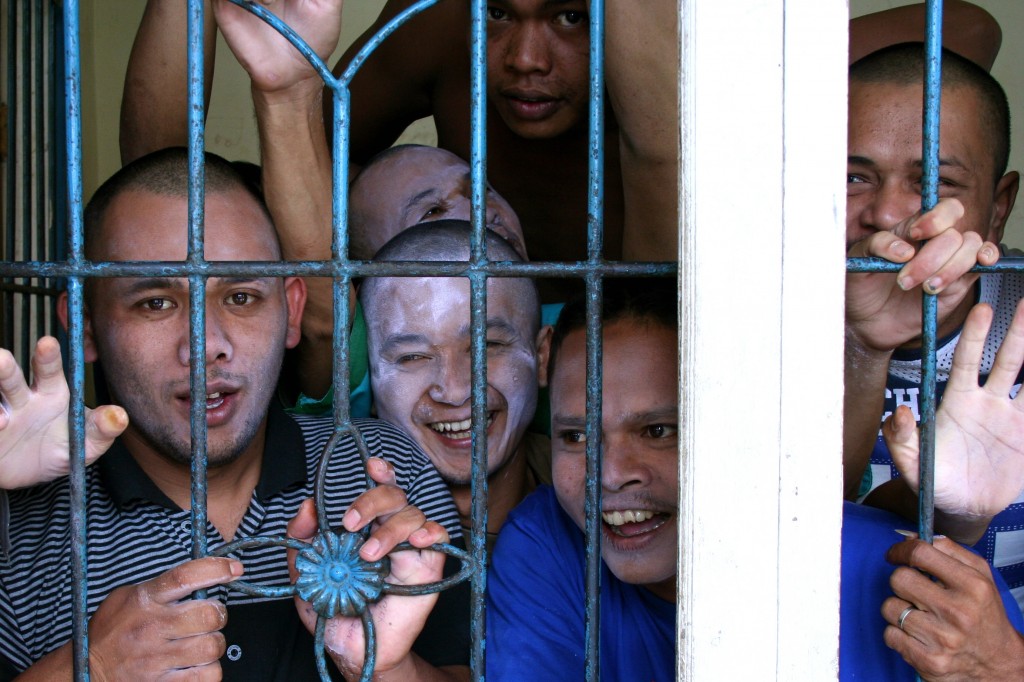One day last fall I stood in the middle of the meunasah, or community meeting hall, in a remote Indonesian village trying to explain who I am and what I was doing there. A few dozen people sat on straw mats sipping bottled water and snacking on fried plantain strips, watching me expectantly. The village leader, a thin man with intense brown eyes and bushy mustache, had asked me to address them, and in an act of hospitality, or perhaps sensing a comedic opportunity, he’d given me a smoked duck egg to eat while I spoke.
Through a translator, I told them I was a journalist from America, and that I was working on an article about the community mental health program that began here in Aceh province after the 2004 earthquake and tsunami. The idea of this program, which I describe in more detail in today’s issue of Science, is to shift much of the work traditionally done by psychiatrists to less specialized health workers: general practitioners, nurses, and even ordinary villagers.

The reason this matters is that mental illness is a huge, if under-appreciated, cause of disability and financial hardship in the developing world. And Indonesia, like most developing countries, does not have nearly enough psychiatrists to go around. It probably never will. Even at triple its current training rate, it would take Indonesia decades to catch up even to upper-middle income countries like Mexico and Turkey.
What’s worse, most psychiatrists are concentrated in big mental hospitals in big cities. Two days earlier I had visited the mental hospital in Banda Aceh, the provincial capital. Before the tsunami, this hospital, with a staff of 5 psychiatrists, was the sole option for mental health care in a province of 4.5 million people. It’s not a bad place by Indonesian standards, but some wards were very crowded and many patients were locked in their rooms, contrary to international standards on human rights.
For people in remote parts of the province, a bus ride to the capital can take a day and cost a month’s wages. Many people turn instead to traditional healers, whose methods range from chants and prayers to prodding a patient’s ears with a burning stick to stop his hallucinations.
When this doesn’t work (and of course it doesn’t) some families resort to pasung, or confinement. I met one man with schizophrenia, now in his early 40s, who spent nearly 20 years in a cramped cell his family built for him in their yard. He had attacked another villager, and his family locked him up because they and others were afraid of him. They say they had no choice. A nurse from the new mental health program found him a few years ago and helped arrange treatment at a nearby clinic. He now lives inside his family’s house. As recently as 2010, 200 mentally ill people in Aceh were confined in chains, stockades, or cells, and ending this practice is a major goal for the provincial governor and health authorities.

I didn’t go into all this as I was standing in the middle of the meunasah, and I didn’t need to. Earlier in my visit, people here had been telling me similar stories themselves. I told them I was there to find out if the new mental health program was making life any better for people with mental illness in their community.
Meanwhile, things were not going well for me with the duck egg.
Every time I peeled off a bit of shell, a chunk of white stuck to it. I took little bites here and there but had nowhere to put the bits of shell. This clearly amused the villagers, but their giggling was not unkind. When I could think of nothing else to say, I asked them if they had any questions.
One man asked if we have a program like this in America. No, not really. The tsunami produced an outpouring of international concern for the psychological health of the survivors, and the program here was kick-started by foreign aid and expertise that flowed into Aceh after the disaster.
Now run by the provincial health authorities, it has provided mental health training for hundreds of doctors and nurses throughout Aceh. The nurses, in turn, have trained several thousand village volunteers whose job it is to look out for people in their communities who might need help.
Whether such non-specialists can provide effective mental health care is an open question. A handful of clinical trials in other developing countries, a couple of which I mention in my article, have been encouraging, but the project in Aceh is a messy, real-world experiment on whether this can work on a much bigger scale.

Another man asked what the US government is doing to cure mental illness, and I said something about genes and neurotransmitters and trying to understand the brain — the kind of stuff that makes up the core of my beat at Science. But standing there, half a world away, the words rang hollow. There have been no game-changing breakthroughs in psychiatric drugs for half a century, pharmaceutical companies are abandoning drug development for brain disorders because it’s so difficult and expensive, and our leading psychiatrists can’t even agree where to draw the line between normal and abnormal behavior for the forthcoming edition of the DSM-5, the American Psychiatric Association’s influential catalog of mental maladies.
Science will eventually lead to better treatments for disorders like depression and schizophrenia. But in the meantime, low-tech strategies like the one in Aceh could potentially do a lot of good for a lot of people.
I hope it works. I wasn’t sure what to expect from people in a place where as many as 160,000 perished in the tsunami, where tens of thousands more died in the preceding 30-year military conflict, and where Sharia police reportedly scold women for wearing their jeans too tight and break up unmarried couples who sit together after dark. But in my short visit, the people of Aceh showed remarkable warmth, openness, and generosity. Not to mention a sense of humor.
At one point I noticed the village leader, Mahdi Abdullah, sitting nearby eating a duck egg of his own. He’d broken the egg in half and was using a plantain strip as a spoon to scoop out the inside. So that’s how it’s done, I thought, and as he caught my eye he gave me a knowing smile.
—
Greg Miller is the San Francisco news correspondent for Science magazine. As a 2005 Rosalynn Carter Fellow for Mental Health Journalism, he traveled to Sri Lanka, India, and Hong Kong to report a series of articles on the challenges of treating mental illness in developing countries.
All photographs by the author.

Greg —
Very nice, a thoughful and honest treatment of a difficult area. Your essay is what I consider LWON at its best — the insights of a good science writer that don’t make it into an article but that provide a more fundamental view of a problem than scientific data. Neuroscience has made important progress, but has a long way to go before it throws penetrating light on mental disease and normal mental function, much less gives rise to radically new forms of therapy. Which is not surprising. How long has it been since Avery, MacLeod and McCarty? And we have yet to obtain more than spotty success with gene therapy.